
the piano’s place in design history
THE FORGOTTEN ELEMENT IN DESIGN
Because of its size and visibility, the piano is intended to be a core element of a room design – a central piece with its own distinct style that defines the room around it. Although it may be the largest and most visible piece in a room, the piano is often given the least amount of consideration when it comes to style, design, and color. While the smallest details like fixtures and accessories receive extensive consideration when planning the space around us, the piano is often perceived as having no unique style or identity of its own. Rather than being the focal core element to bring a room together as it was intended, many designers today approach the piano as an afterthought meant to blend into the background unnoticed.
THE GOLDEN AGE OF FRANCE
– Louis XIV, Louis XV & Louis XVI Styles –
< Please scroll left or right to view examples of this historic design style category >

A. B. Chase Louis XVI
Grand Piano

Baldwin Louis XV Rococo
Grand Piano
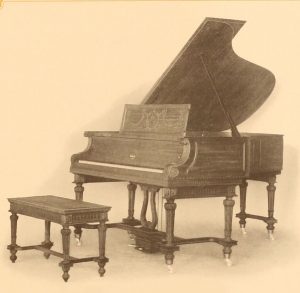
Baldwin Louis XVI
Grand Piano
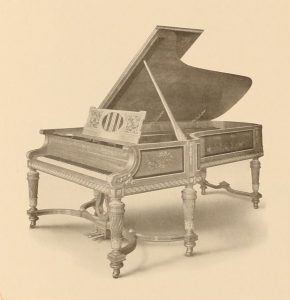
Baldwin Louis XVI
Grand Piano

Baldwin Louis XV
Grand Piano

Bechstein Louis XV
Grand Piano

Behr Brothers Louis XV
Upright Piano

Blasius Louis XVI
Upright Piano

Bluthner Louis XV
Grand Piano
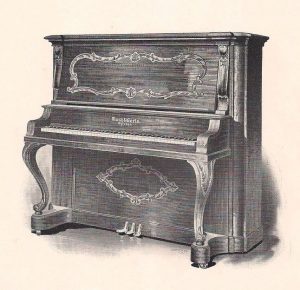
Bush & Gerts Louis XV
Upright Piano

Cable Nelson Louis XVI
Upright Piano

Cunningham Louis XV
Grand Piano

Hardman Louis XVI
Grand Piano

Knabe Louis XIV Baroque
Grand Piano
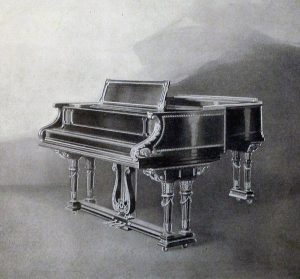
Knabe Louis XVI
Grand Piano
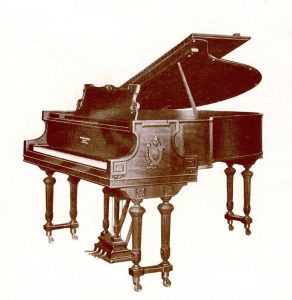
Krakauer Louis XVI
Grand Piano

Mason & Hamlin Louis XV
Grand Piano

Schubert Louis XV
Upright Piano
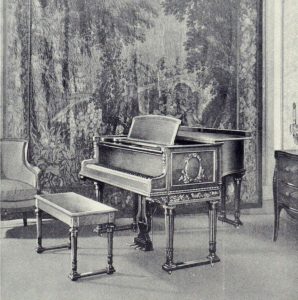
Sohmer Louis XVI
Grand Piano

Steinway Louis XV Rococo
Grand Piano

Steinway Louis XVI
Grand Piano
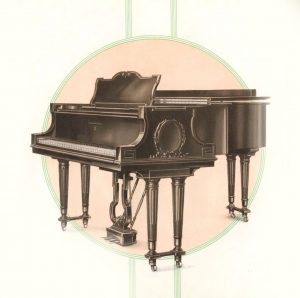
Steinway Louis XVI
Grand Piano

Steinway Louis XV
Grand Piano
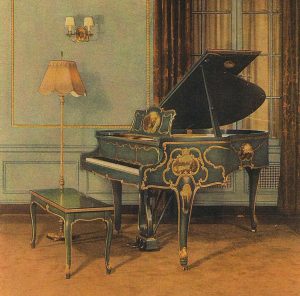
Weber Louis XV
Grand Piano

Weber Louis XVI
Grand Piano

Weber Louis XVI
Grand Piano

THE PIANO IS THE CORE FOCAL POINT OF A ROOM. THE STYLE, COLOR, AND DESIGN OF AN INSTRUMENT WILL DEFINE THE ROOM AROUND IT.
Though slow to change, it eventually became clear to piano manufacturers that they would need to offer period-specific style instruments in order to meet demand and remain competitive. The success of the furniture and textile industries eventually led piano manufacturers to offer special models in period-style cases like Louis XVI, Italianate, Chippendale, Georgian, Jacobean, Spanish Renaissance, etc. in addition to their standard traditional lines.
EARLY AMERICAN AND COLONIAL DESIGN
– Early American, Colonial & Duncan Phyfe –
< Please scroll left or right to view examples of this historic design stye category >
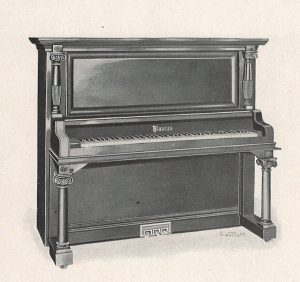
Blasius Colonial
Upright Piano
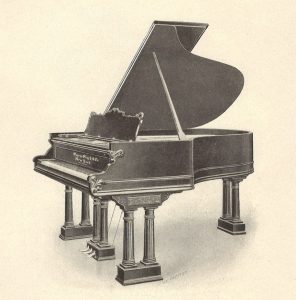
George Steck Colonial
Grand Piano

Kimball Colonial Baby
Grand Piano

Kimball Colonial
Upright Piano

Knabe Early American
Grand Piano

Mason Hamlin Colonial
Grand Piano

Shoninger Colonial
Upright Piano
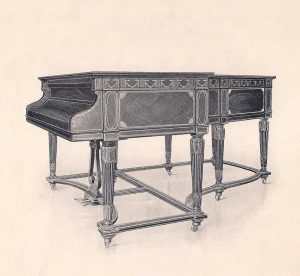
Steinway & Sons Colonial
Grand Piano
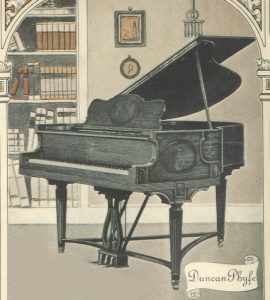
Weber Duncan Phyfe
Grand Piano

HOW IT WAS THEN: THE ARRIVAL OF THE NEW CENTURY
The Industrial Revolution of the late 19th and earl 20th Century was a time of lavish lifestyles, excessive luxury, and great prosperity. With the arrival of the new Century, a revival of classic and historically influenced design styles was gaining immense popularity worldwide. The renaissance in historically influenced design style prompted the building, furniture, and textile industries to include period-styled products in their offerings in order to meet the demand of the customer.
THE JACOBEAN PERIOD
– Jacobean, William & Mary, Spanish Renaissance & Gothic –
< Please scroll left or right to view examples of this historic design style category >

Baldwin Jacobean
Grand Piano
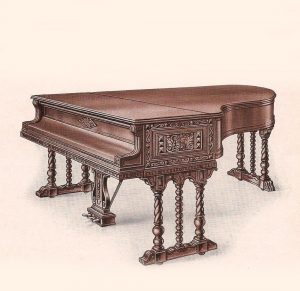
Bluthner Spanish Renaissance
Grand Piano

Cable Nelson Spanish Style
Grand Piano

Chickering William & Mary
Grand Piano

Hardman Jacobean
Grand Piano

Hardman Spanish Renaissance
Grand Piano
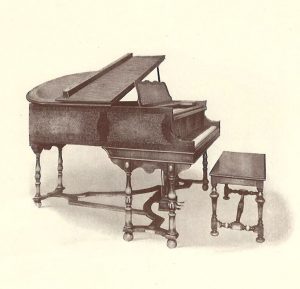
Hardman William & Mary
Grand Piano
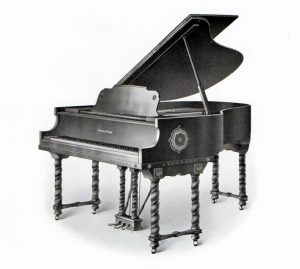
Ivers & Pond Spanish Style
Grand Piano

Kimball Spanish Renaissance
Grand Piano
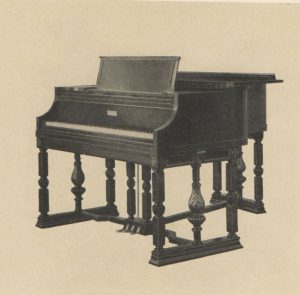
Knabe Spanish Renaissance
Grand Piano

Knabe William & Mary
Grand Piano

Kranich & Bach Gothic
Grand Piano
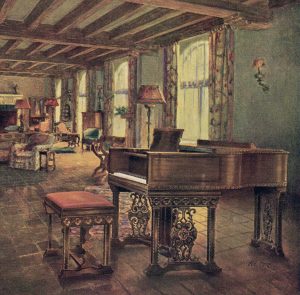
Marshall & Wendell Latin
Grand Piano
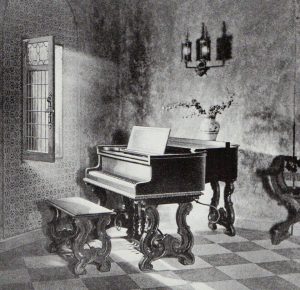
Sohmer Spanish Renaissance
Grand Piano

Weber William & Mary
Grand Piano

Wurlitzer Jacobean
Grand Piano
CUSTOM MADE, ONE-OF-A-KIND “ART CASE” PIANOS
More prominent manufactures specialized in creating custom, one-of-a-kind pianos on special order for wealthier clients in order to match their home’s decor. It was not uncommon for a wealthy client to visit a prominent piano factory, choose the instrument they preferred among all others, then had the factory commission specialized cabinet makers and artists to design and build a custom cabinet around the instrument they chose. This piano would have been picked out among all others for its fine tone quality, and then a small fortune spent to have the cabinet custom decorated to suit the client’s decor! The demand for specialized, custom-decorated instruments was so great that many manufacturers had a separate “Art Department” employing skilled artists and craftsmen full-time for the purpose of creating these beautiful works of art!
THE GEORGIAN PERIOD – ENGLISH FURNITURE RENAISSANCE
– Chippendale, Hepplewhite, Queen Anne, Sheraton & Adam –
< Please scroll left or right to view examples of this historic design style category >

A. B. Chase Sheraton
Grand Piano
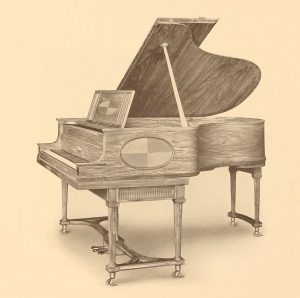
Baldwin Adam
Grand Piano
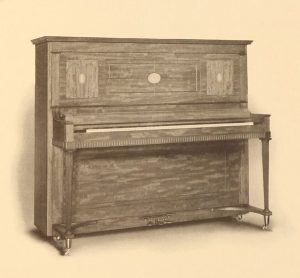
Baldwin Adam
Upright Piano
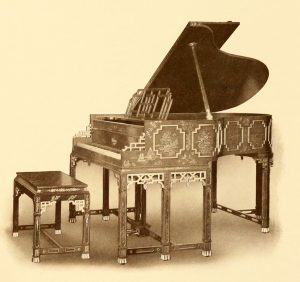
Baldwin Chinese Chippendale
Grand Piano
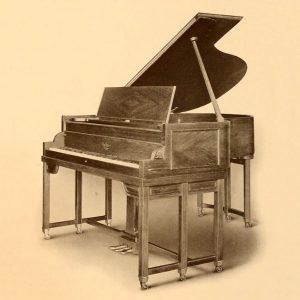
Baldwin Chippendale
Grand Piano
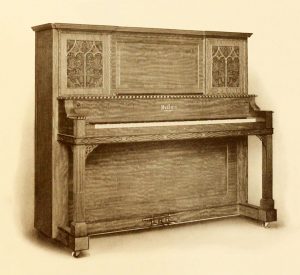
Baldwin Chippendale
Upright Piano

Baldwin Georgian
Grand Piano

Baldwin Hepplewhite
Grand Piano
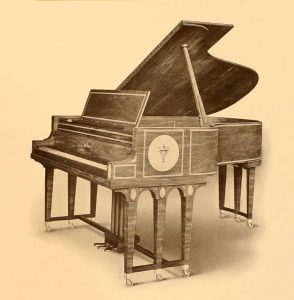
Baldwin Sheraton
Grand Piano
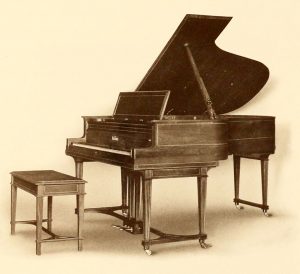
Baldwin Sheraton
Grand Piano
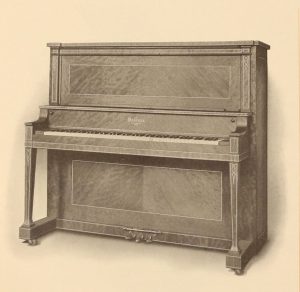
Baldwin Sheraton
Upright Piano
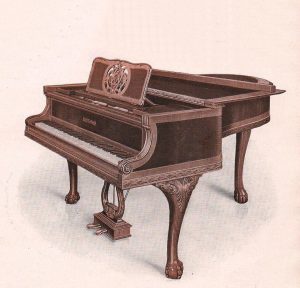
Bluthner Chippendale
Grand Piano
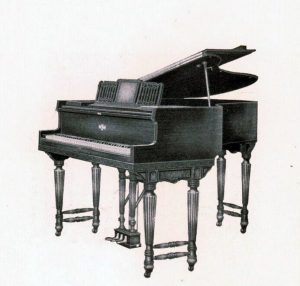
Cable Nelson Hepplewhite
Grand Piano
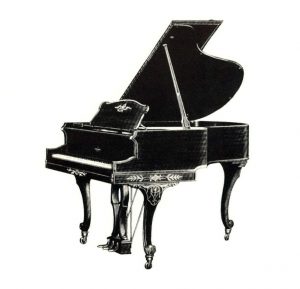
Charles Fredrick Stein Queen Anne
Grand Piano

Feurich Chinese Chippendale
Grand Piano

Feurich Chinese Chippendale
Grand Piano

George Steck Early English
Grand Piano

Hardman Early English
Grand Piano

Hardman Queen Anne
Grand Piano

Kimball Chippendale
Grand Piano

Kimball Hepplewhite Baby
Grand Piano
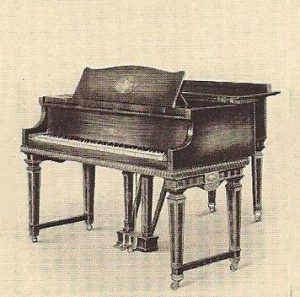
Kimball Hepplewhite
Grand Piano

Knabe Hepplewhite
Grand Piano

Knabe Queen Anne
Grand Piano

Knabe Sheraton
Grand Piano

Mason & Hamlin Sheraton
Grand Piano
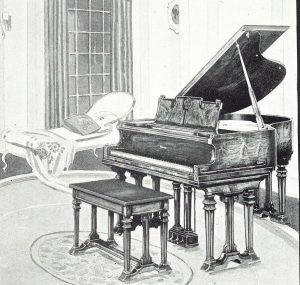
Schiller Georgian
Grand Piano
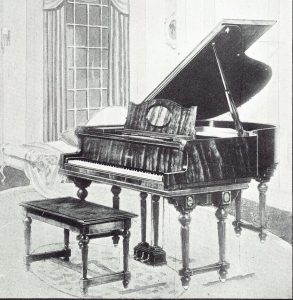
Schiller Hepplewhite
Grand Piano
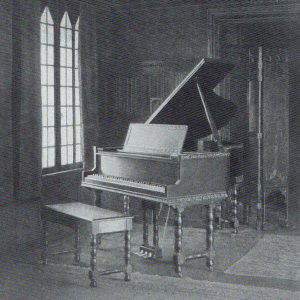
Sohmer Early English
Grand Piano

Sohmer Early English
Upright Piano

Steinway Chippendale
Grand Piano

Steinway Sheraton
Upright Piano

Stroud Sheraton
Grand Piano

Weber Adam
Grand Piano

Weber Chinese Chippendale
Grand Piano
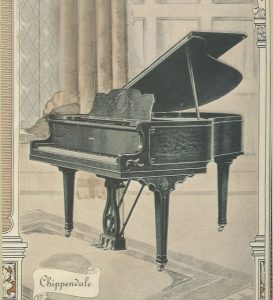
Weber Chippendale
Grand Piano
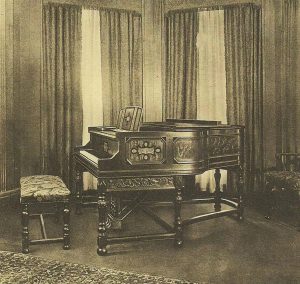
Weber Early English
Grand Piano
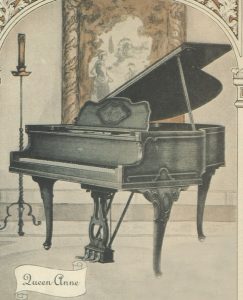
Weber Queen Anne
Grand Piano

DESIGN COMES FULL CIRCLE: THE ARRIVAL OF THE 21st CENTURY
With the arrival of this new century and the age of the internet, we are once again seeing a trend moving toward the comfort and elegance of Classic and Traditional design, often with a modern twist. Our hectic, fast-paced lives find comfort in the spaces we create around ourselves; the ideal of “Hearth and Home” is more important today than ever before. As we come “full-circle” as a modern society, elements of style which were once valued are again becoming popular and mainstream.
THE ITALIAN RENAISSANCE PERIOD
– Italian Renaissance, Florentine, Tuscan & Venetian –
< Please scroll left or right to view examples of this historic design style category >
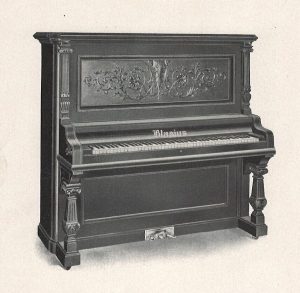
Blasius Florentine
Upright Piano
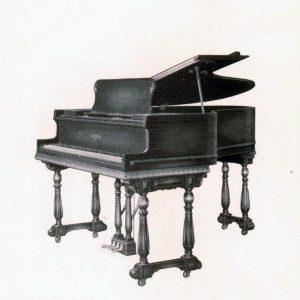
Cable Nelson Italian
Grand Piano

Chickering Florentine
Grand Piano

Knabe Florentine
Grand Piano
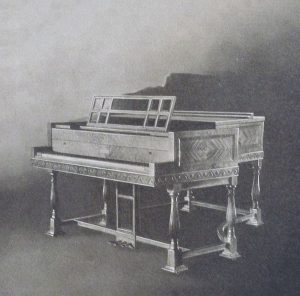
Knabe Italian Renaissance
Baby Grand Piano

Knabe Italian Renaissance
Grand Piano

Knabe Italian Renaissance
Grand Piano
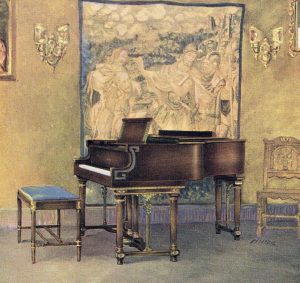
Marshall & Wendell Florentine
Grand Piano

Marshall & Wendell Italian
Grand Piano
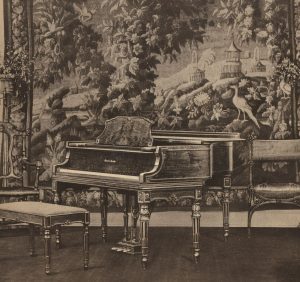
Mason & Hamlin Florentine
Grand Piano

Mathushek Florentine
Grand Piano

Mehlin Tuscan
Upright Piano

Needham Florentine
Upright Piano

Schiller Florentine
Grand Piano

Sohmer Florentine
Grand Piano
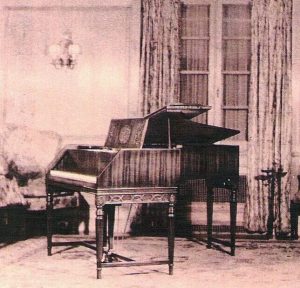
Steck Italian
Grand Piano
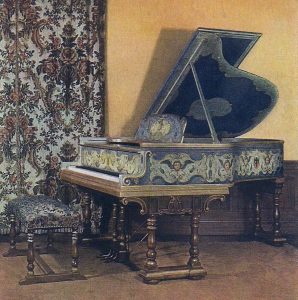
Weber Italian Renaissance
Grand Piano

Weber Venetian
Grand Piano

Weber Tuscan
Grand Piano
TODAY’S REVIVAL OF TIMELESS, OLD WORLD DESIGN STYLE
Today, modern furniture and textile companies are expanding their lines of period-inspired products as the demand for Classic and Traditional style continues to grow. Some of today’s best-selling lines are rooted in centuries old design, while other best-sellers offer “distressed” and “faux-finished” pieces which are specially finished in order to make new furniture look old and worn!
And, just like it was a century ago, piano manufacturers are once again slow to change their product lines in order to offer anything other than the sterile, generic black piano, making it difficult for both the client and the design professional to realize that there is an alternative.




